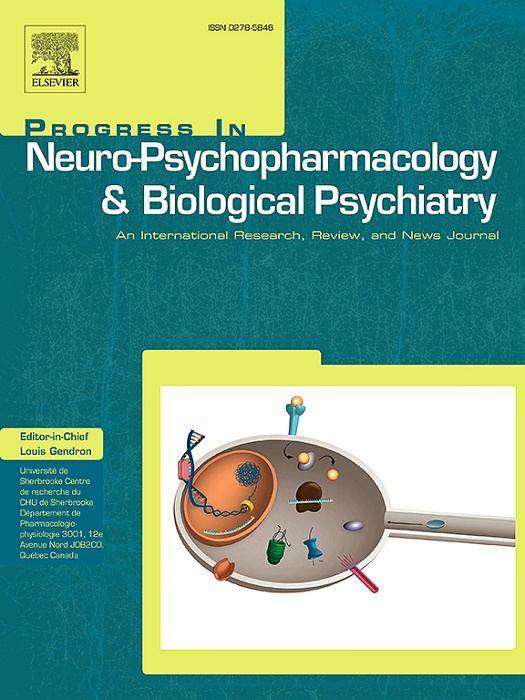Behavioural and pharmacological evaluation of the psilocybin analogue baeocystin in Wistar rats
IF 3.9
2区 医学
Q1 CLINICAL NEUROLOGY
Progress in Neuro-Psychopharmacology & Biological Psychiatry
Pub Date : 2025-07-13
DOI:10.1016/j.pnpbp.2025.111439
引用次数: 0
Abstract
Baeocystin is a naturally occurring tryptamine-based compound found in various psychoactive mushrooms, including in several species of Psilocybe genus. Due to its structural similarity to psilocybin, which has shown a therapeutic potential in treatment of psychiatric disorders, there is a growing interest in investigating whether baeocystin exhibits comparable effects. This study investigated the pharmacokinetic profile and acute behavioural effects of baeocystin in Wistar rats.
Behavioural assessments including locomotor activity and its spatial characteristics (in the open field test) and sensorimotor gating measured by prepulse inhibition were evaluated after subcutaneous administration of 1.25 or 5 mg/kg baeocystin. Pharmacokinetics and brain-serum ratios were analysed after the 5 mg/kg sc. dose.
Pharmacokinetics demonstrated that both baeocystin and its metabolite, norpsilocin, have a very limited ability to cross the blood-brain barrier. Consistent with the pharmacokinetic profile, baeocystin had no significant effects on locomotor activity, exploratory behaviour, anxiety-like responses, or sensorimotor gating at doses of either 1.25 or 5 mg/kg.
In conclusion, our results suggest that baeocystin has minimal to no behavioural effects in rats, probably due to its poor permeability across the blood-brain barrier. This limited penetration may account for its negligible neurobiological and psychedelic activity.
裸盖菇素类似物baeocytin对Wistar大鼠的行为学和药理学评价。
Baeocystin是一种天然存在的以色胺为基础的化合物,存在于各种具有精神活性的蘑菇中,包括几种裸盖菇属。由于其结构与裸盖菇素相似,裸盖菇素在治疗精神疾病方面显示出治疗潜力,因此研究裸盖菇素是否具有类似的效果越来越引起人们的兴趣。本研究探讨了黄芩苷在Wistar大鼠体内的药动学特征和急性行为效应。在皮下注射1.25或5 mg/kg黄芩素后,评估行为评估,包括运动活动及其空间特征(在空旷场试验中)和脉冲前抑制测量的感觉运动门控。分析5 mg/kg sc给药后的药代动力学和脑-血清比值。药代动力学表明,黄芩素及其代谢产物去甲silocin通过血脑屏障的能力非常有限。与药代动力学特征一致,在1.25或5 mg/kg剂量下,baeocystin对运动活动、探索行为、焦虑样反应或感觉运动门控没有显著影响。总之,我们的研究结果表明,黄芩苷对大鼠的行为影响很小,甚至没有影响,这可能是由于它穿过血脑屏障的渗透性差。这种有限的渗透可以解释其可忽略的神经生物学和迷幻作用。
本文章由计算机程序翻译,如有差异,请以英文原文为准。
求助全文
约1分钟内获得全文
求助全文
来源期刊
CiteScore
12.00
自引率
1.80%
发文量
153
审稿时长
56 days
期刊介绍:
Progress in Neuro-Psychopharmacology & Biological Psychiatry is an international and multidisciplinary journal which aims to ensure the rapid publication of authoritative reviews and research papers dealing with experimental and clinical aspects of neuro-psychopharmacology and biological psychiatry. Issues of the journal are regularly devoted wholly in or in part to a topical subject.
Progress in Neuro-Psychopharmacology & Biological Psychiatry does not publish work on the actions of biological extracts unless the pharmacological active molecular substrate and/or specific receptor binding properties of the extract compounds are elucidated.

 求助内容:
求助内容: 应助结果提醒方式:
应助结果提醒方式:


